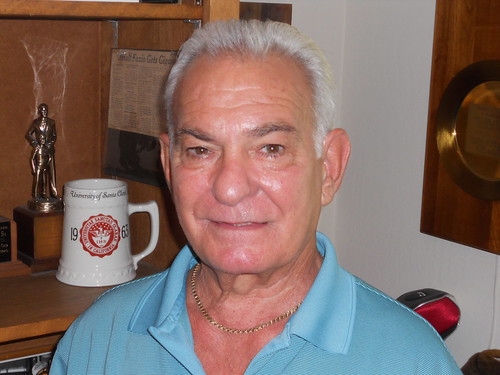Here’s the latest guest post from Joe Guzzardi. Today, he looks at the recent managerial change for his hometown team.
__________________
Recently-fired Pirates manager John Russell declines interview requests from the Pittsburgh media. Who can blame him? According to the scribes, since the day three years ago Russell was hired, he’s always been the wrong guy, with the wrong personality, the wrong background and the wrong skill set.
Sometimes the criticism heaped on Russell was valid. But too often it had a nasty tone that after three years understandably left him unwilling to speak to journalists who he views, rightly or wrongly, as his enemy.
I’ve been a baseball fan long enough to know that when a manager loses 299 games over three years, he’s going to be fired.
Still, Russell’s dismissal may be unfair and, in the long run, possibly a mistake.
Here’s what I know for sure.
If any of the eight playoff game managers had been forced to use for half a season the poor fielding, .169 hitter Aki Iwamura, bat him lead off and also start pitcher Charlie Morton every fifth day for more than three months until his record reached 1-9 with a 9.35 ERA, they’d be home watching the games on television just like you and me.
Russell’s standing orders from above were to keep trotting Iwamura and Morton out no matter how poorly they performed.
Any manager whose roster turned over as frequently as Russell’s during his three year tenure with proven veterans shipped out in exchange for low level minor league prospects wouldn’t fare well either. Stocking the minor leagues may (or may not) be great for the Pirates’ future but it doesn’t do a thing for the present.
A constant Russell criticism is that he lacks fire and rarely comes out to challenge an umpire’s call. Sure, it’s more dramatic when the manager races out of the dugout to kick dirt on the umpire’s shoes. But in sixty years of watching baseball, I’ve never seen a single call, even the most egregious ones, reversed after Billy Martin-type histrionics. If the dramatics are only about show, why bother?
Russell’s strategic moves puzzled many, including me. But let’s be honest, who among us would dare to propose that he knows more about baseball than Russell who has been in the sport professionally for more than 25 years?
Another oddity in the Pirates prompt post-season dismissal is that no obvious replacement is in the wings. If Pirate management were to fire Russell, then immediately announce that a big name like, for example, Joe Torre had been signed or Jim Leyland were returning, then the quick move to can Russell would be more understandable.
Locating a manager willing to take on the Pirates’ challenge will be a grind. Of the several managerial openings, the Pirates job is the least appealing for reasons that need no elaboration. Unless the Pirates get a major pitching infusion during the winter, no manager will make a significant difference in 2011.
What’s interesting is that few if any Pirates’ players criticized Russell, publicly at least. I’ll make the case that the Pirates best position players, often referred to as the franchise’s future, blossomed under Russell. Mid-season call ups Neil Walker, Pedro Alvarez and Jose Tabata consistently improved during the late summer months. Garrett Jones and Andrew McCutchen proved that their 2009 seasons were no flukes.
Based the young Bucs’ performances, I assume their working relationship with Russell was solid. Will players like Walker, et al., continue to progress under a new manager? Maybe. But since there’s sure to be an adjustment period, why tinker with success? As the old saying goes, better the devil you know.
Russell, in an interview with MLB Radio, said he “loves baseball,” is ready to “move on” and plans to “make some calls.” He’s hopeful that he’ll get another shot at managing in the majors. But if not, Russell says he’s ready to coach or manage in the minors where he was once International League Manager of the Year.
As one of Steve Carlton’s Philadelphia Phillies battery mates and a Texas Ranger who caught one of Nolan Ryan’s seven no-hitters, Russell is unlikely to be out of baseball long.
I wish Russell well and hope that wherever he lands, it’s with a winner.
In the meantime, I would guess that Russell could find comfort in being paid $500,000 in 2011 for the considerable joy of not managing the Pirates.
__________________
Joe Guzzardi belongs to the Society for American Baseball Research, as well as the Internet Baseball Writers Association of America. Email him at guzzjoe@yahoo.com
